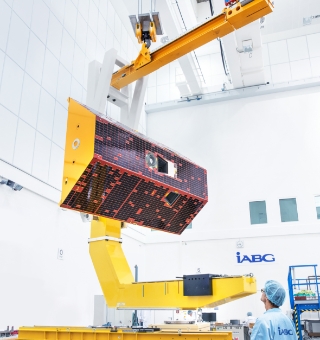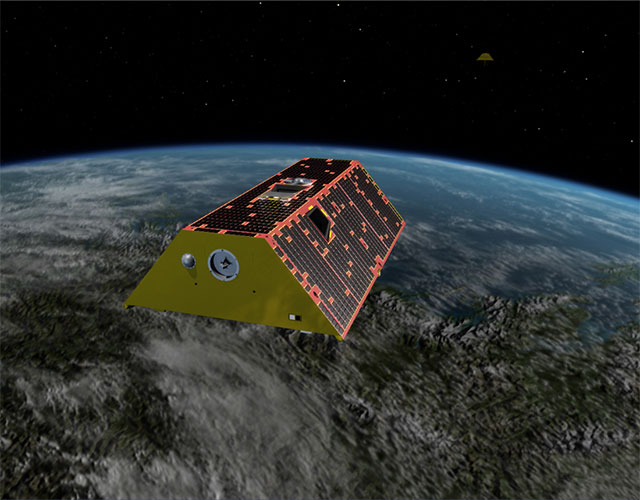SPACECRAFT
Size: 10 feet, 3 inches (3.123 meters) long, 2 feet, 6.7 inches (0.78 meters) high, 6 feet, 4.5 inches (1.943 meters) wide at bottom, 2 feet, 3.3 inches (0.69 meters) wide at top
Mass: 1,323.2 pounds (600.2 kilograms) each, including onboard propellant at launch
Power: Panels of gallium arsenide solar cells mounted on satellite's top and side exterior surfaces
Batteries: 78-ampere-hour battery consisting of lithium-ion cells
Instruments: Microwave instrument, accelerometer, laser ranging interferometer (technology demonstration), laser retro-reflector


